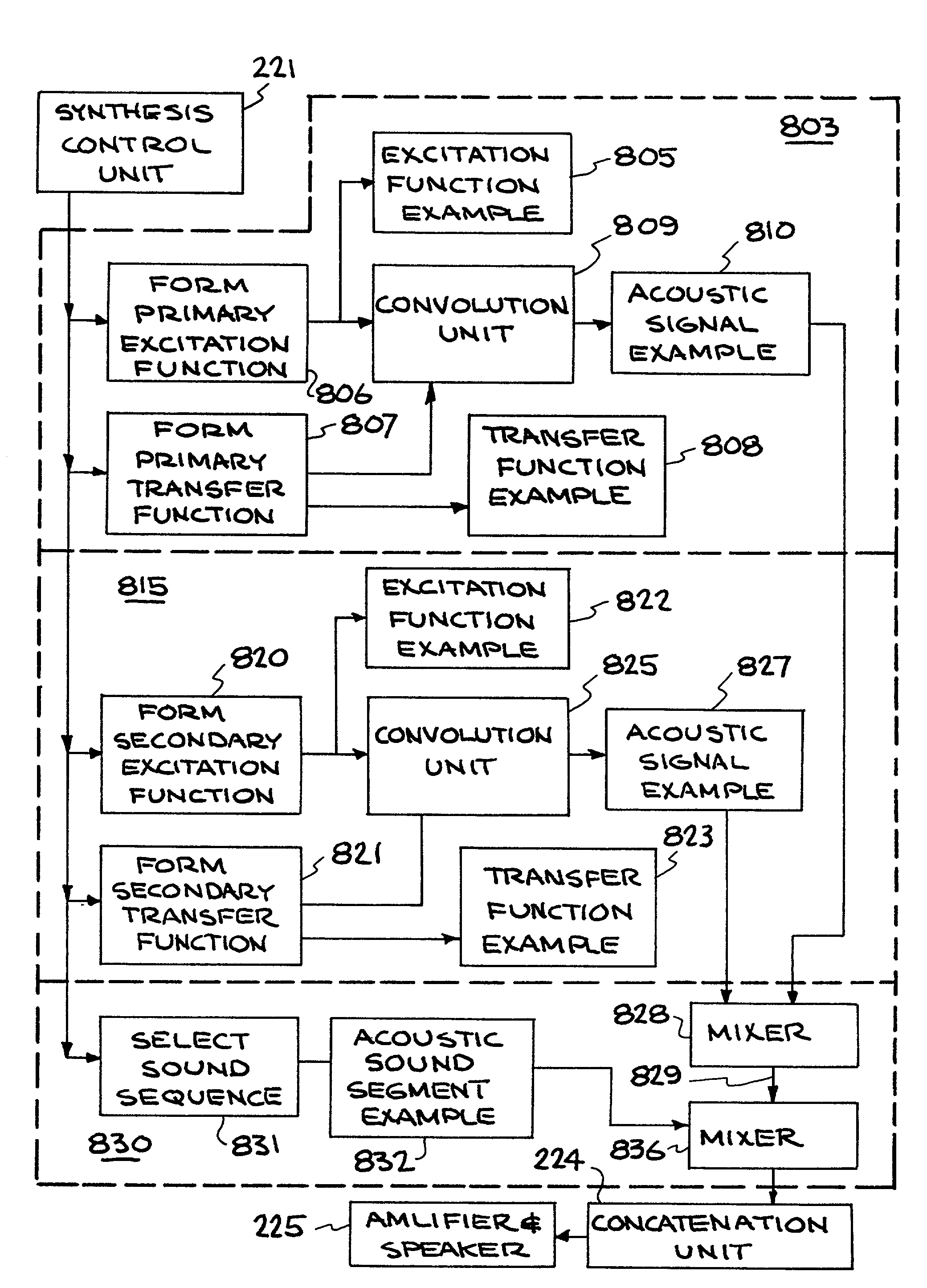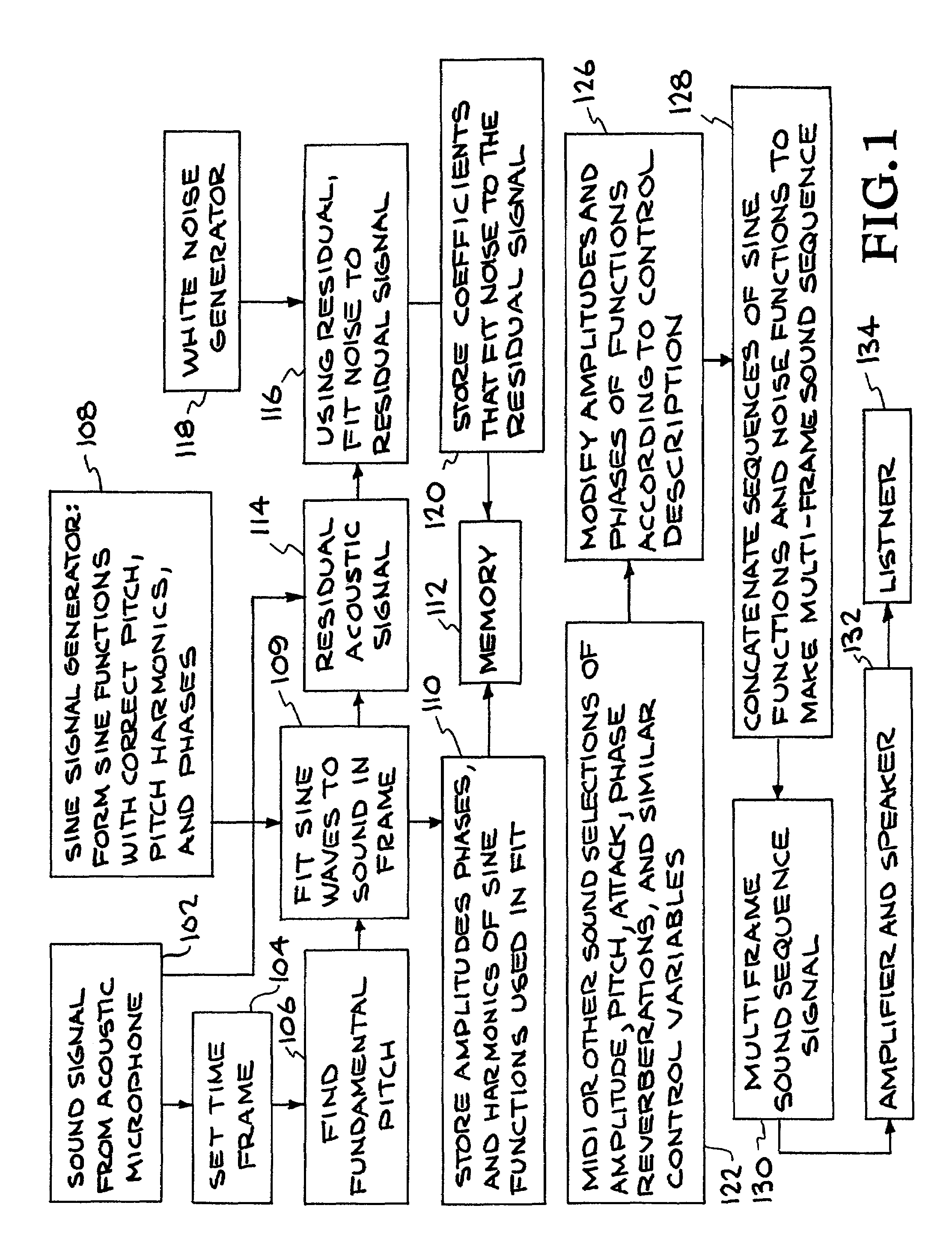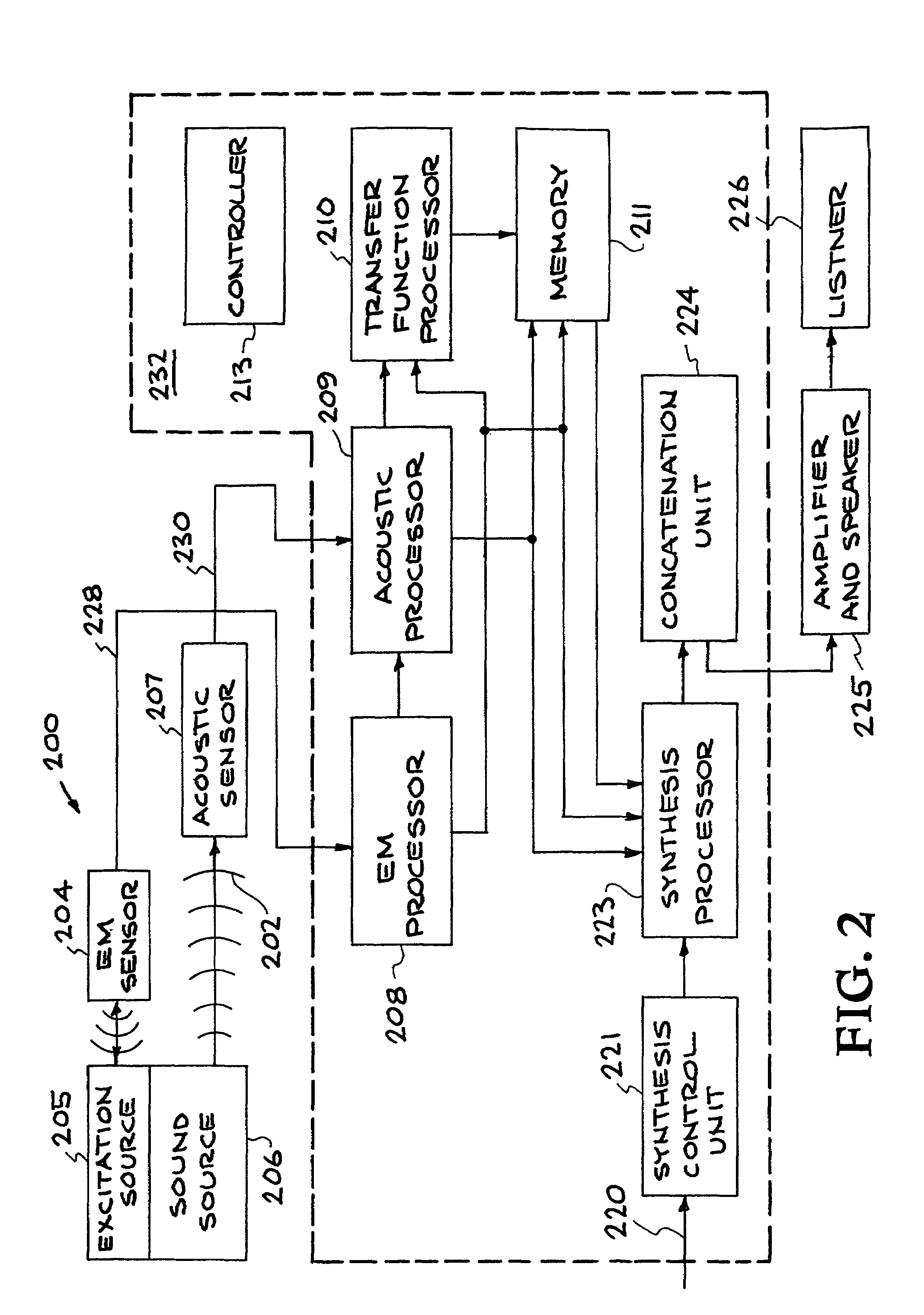System and method for characterizing, synthesizing, and/or canceling out acoustic signals from inanimate sound sources
a technology sound sources, applied in the field of systems and methods for characterizing, synthesizing, and/or canceling out acoustic signals from inanimate sound sources, can solve the problems of not using excitation source information to analyze, synthesize, and cancel sounds that inanimate objects, and none of these prior art methods accurately capture the qualities of inanimate sound sources
- Summary
- Abstract
- Description
- Claims
- Application Information
AI Technical Summary
Benefits of technology
Problems solved by technology
Method used
Image
Examples
Embodiment Construction
[0038]The present invention describes a system and method for analyzing and synthesizing inanimate sounds. Using the techniques described herein, musical instruments may be more accurately simulated, sound from undesirable noise sources may be canceled, and new and unusual sounds may be generated.
[0039]U.S. Pat. No. 5,729,694, entitled “Speech Coding, Reconstruction and Recognition Using Acoustics and Electromagnetic Waves” by Holzrichter and Ng, filed Feb. 6, 1996, is herein incorporated by reference and describes procedures for sound analysis and simulation based upon measuring excitations and acoustic signals from animate systems (e.g., humans) using ElectroMagnetic (EM) sensors and acoustic sensors. U.S. Pat. No. 5,729,694 also describes how simple mathematical functions, such as polynomials, sines or cosines, can model excitation sources, and how “all-pole” methods, such as Linear Prediction Coding (LPC) can be used. Most importantly, these methods describe how more accurate “p...
PUM
 Login to View More
Login to View More Abstract
Description
Claims
Application Information
 Login to View More
Login to View More - R&D
- Intellectual Property
- Life Sciences
- Materials
- Tech Scout
- Unparalleled Data Quality
- Higher Quality Content
- 60% Fewer Hallucinations
Browse by: Latest US Patents, China's latest patents, Technical Efficacy Thesaurus, Application Domain, Technology Topic, Popular Technical Reports.
© 2025 PatSnap. All rights reserved.Legal|Privacy policy|Modern Slavery Act Transparency Statement|Sitemap|About US| Contact US: help@patsnap.com



